Affiliate disclosure: This post may contain affiliate links. Please see our Privacy Policy.
Bee balm oxymel is soothing and simple to make, and this summery herbal remedy will keep well into the winter months for treating coughs and sore throats during cold and flu season.
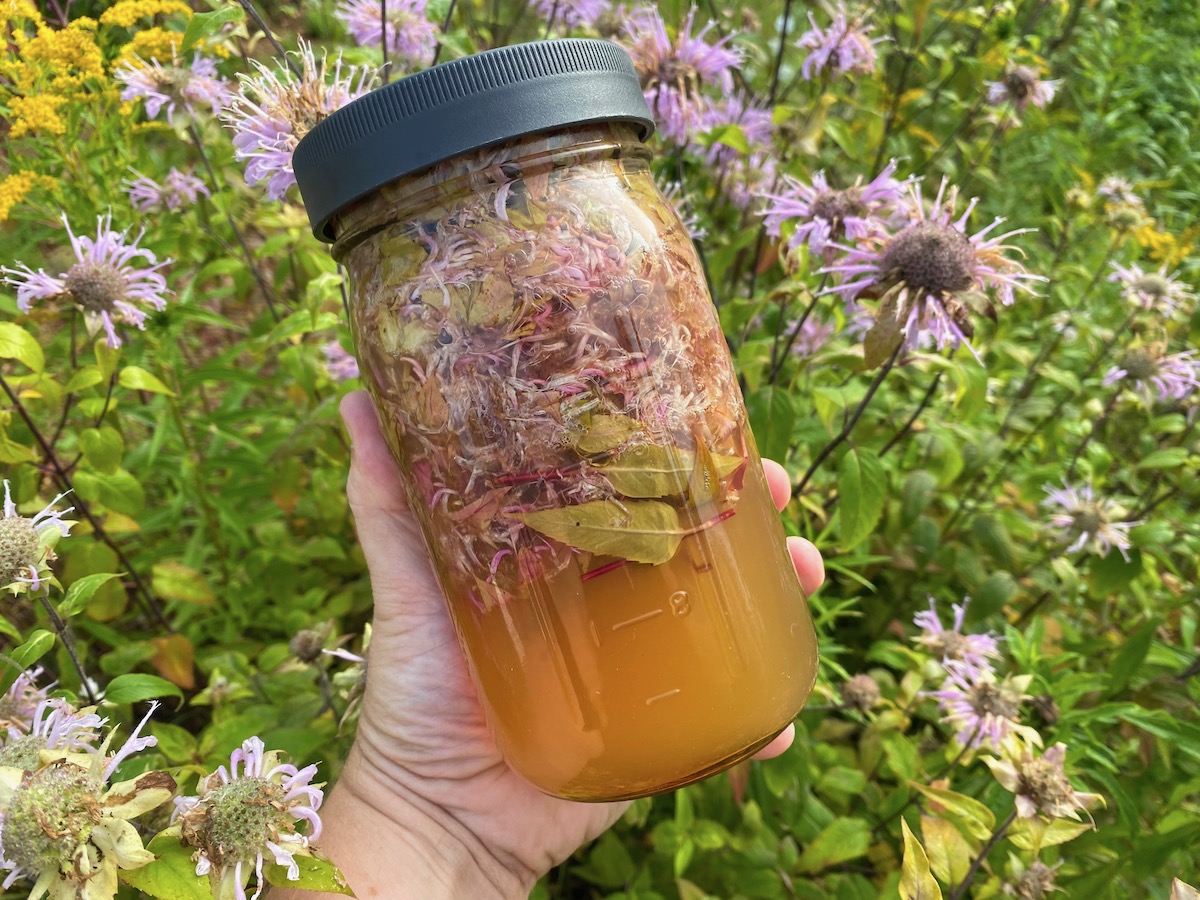
A brightly flowered herb that’s native to the United States, Bee Balm (Monarda sp.) is commonly found both in urban gardens and in the wild—making it an accessible choice for adding to home remedies such as this soothing bee balm oxymel.
All species of bee balm have the same medicinal properties, be it the delicate wild pink bee balm blossoms (Monarda fistulosa) or the bright red cultivated scarlet bee balm (Monarda didyma).
Bee balm is well-known for its soothing medicinal properties, especially when used to calm cold and flu-like symptoms as well as anxiety and nervousness.
I find that this bee balm oxymel is especially useful for coughs, sore throats and other winter cold symptoms, and the mild spice of the herb tends to open up my sinuses while the soothing honey coats my throat.
There are many ways to use bee balm, and this edible flower is used as a seasoning in many countries, in place of oregano. It’s also great in salads or as a simple herbal tea. I’ll often make a simple bee balm tincture too, but nothing beats an oxymel for a sore throat.
Once this beautiful and plentiful herb is in bloom, I can’t resist collecting the plant’s leaves and flowers to make this simple yet powerful oxymel.
(If you don’t have bee balm close at hand, it’s easy enough to grow from seed. Here’s where you can find Scarlet Bee Balm Seed Packets (Monarda didyma) as well as Wild Bergamot Seed Packets (Monarda fistulosa).)
What is an Oxymel?
An oxymel is an old fashioned herbal preparation that’s basically an alcohol-free tincture made from vinegar and raw honey, usually with the addition of medicinal herbs. Oxymels have been prized for their healing benefits for thousands of years. In fact, the use of oxymels can be traced all the way back to ancient Greece (fun fact: the Greek word for oxymel is oxymeli, which means acid and honey).
The two main ingredients, vinegar and honey, play important roles in an oxymel. Vinegar is a solvent, which means it strips the medicinal compounds from the herbs (think minerals, vitamins, tannins, alkaloids, and bitters). The vinegar, typically apple cider vinegar nowadays, also acts as a digestive aid. Raw honey contributes powerful antimicrobial and anti-inflammatory properties and also helps preserve the oxymel and its medicinal potency.
You can make an oxymel out of almost any type of healing herbs as well as familiar edible ingredients like garlic, citrus fruit, apples, onions, horseradish, and ginger. Fire cider is one of the most popular examples of an oxymel, one that is commonly used to combat a bad cough, sore throat, or stuffed-up sinuses.
Other types of herbal oxymels include:
You can read more about oxymels in general in my guide to making herbal oxymels. (You can also make a herbal vinegar or a herbal infused honey separately.)
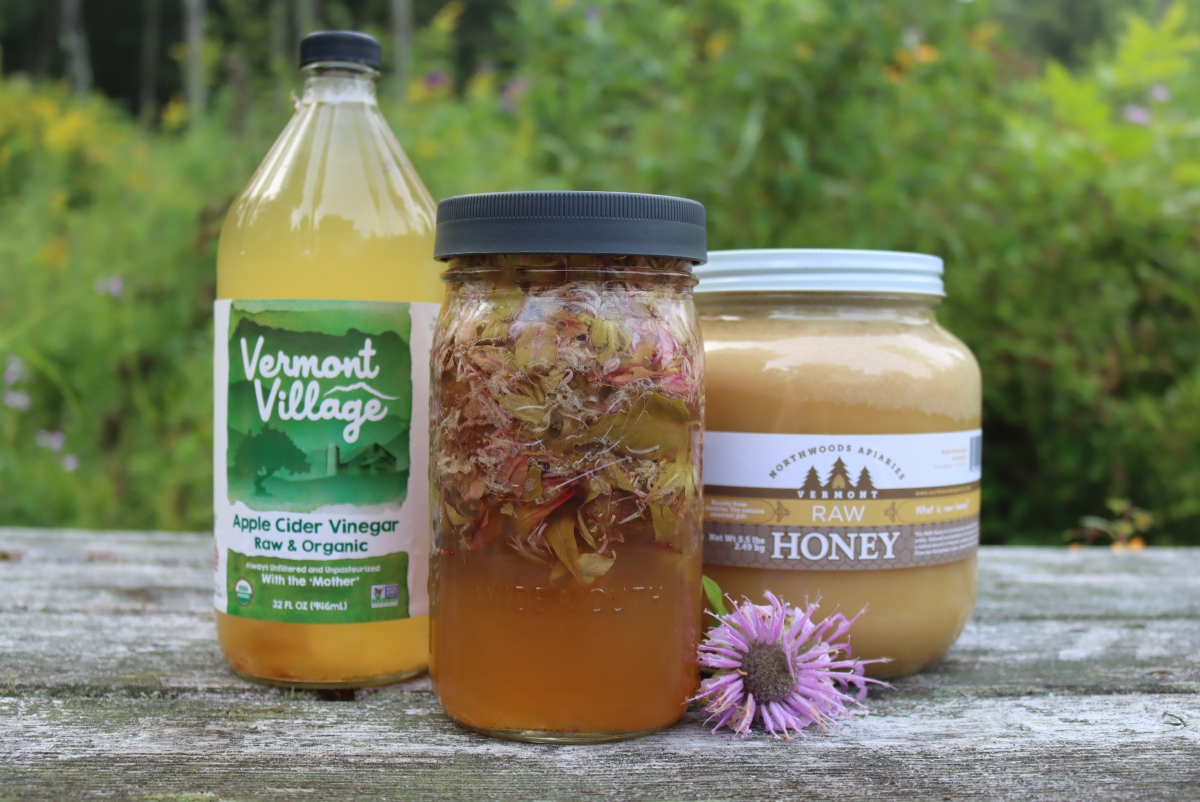
Types of Bee Balm (Monarda sp.)
All Mondarda species have similar medicinal properties, and can be used in to make herbal remedies.
There are two main varieties of bee balm which are common in the US, both of which can be used to make this oxymel. The first type, Monarda didyma (also called scarlet bee balm) is a garden variety often found in perennial beds.
True to its name, this type of bee balm has gorgeous red flowers. Both the leaves and the blossoms smell and taste of fresh mint and oregano.
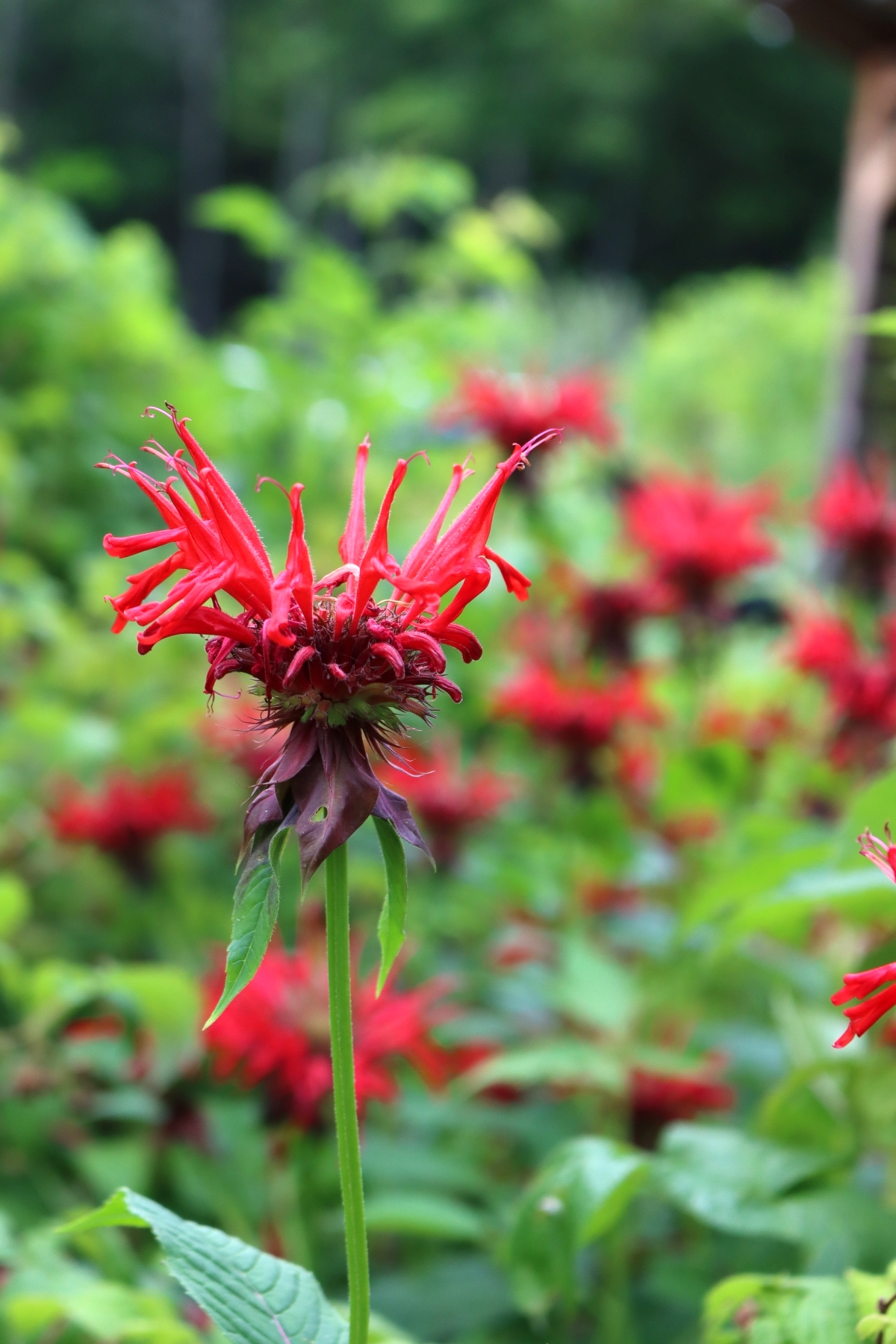
The other type of bee balm, Monarda fistulosa (also called wild bergamot) is a wild version that is native to the United States. It has striking purple blossoms with a smell and flavor that’s very similar to the cultivated version, although you’ll find that the flowers and leaves are slightly more pungent than the domestic variety.
It should be mentioned that both varieties can be found growing in the wild as the species is quite vigorous and has a tendency to escape its cultivated space. You can either forage for bee balm in its natural habitat or grow your own (either cultivated or wild) from seed.
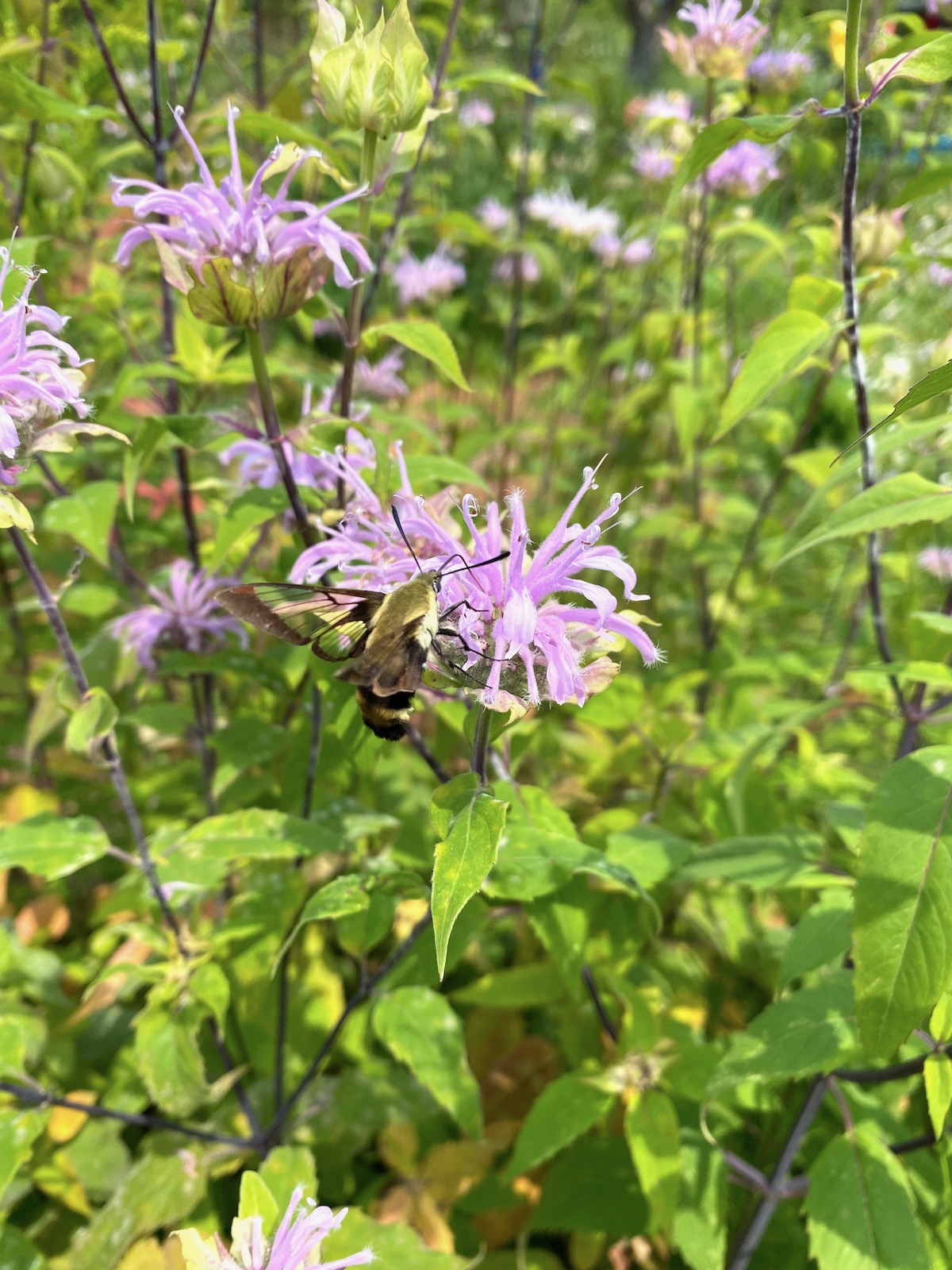
Bee Balm Medicinal Uses
Bee balm has several medicinal uses, but is probably most used for its soothing antimicrobial properties which are particularly useful during cold and flu season. It’s also taken to help soothe digestive issues, particularly bloating, indigestion, and nausea.
Thanks to the herb’s antispasmodic properties it can also help to relieve pain associated with menstrual cramps.
Bee balm is considered a nervine and works to calm the nervous system, meaning it can lessen some of the symptoms associated with anxiety and stress. In my experience, bee balm can do wonders for combating mild anxiety in both adults and children*.
*Never give infants under the age of one honey, raw or otherwise. Honey is directly linked to infant botulism, a rare but potentially fatal illness.
Making Bee Balm Oxymel
Making a bee balm oxymel (or almost much any oxymel, for that matter) is a pretty straightforward process, requiring only a handful of ingredients and tools. To make this oxymel you’ll need the following ingredients:
- Freshly picked or dried bee balm, flowers and leaves (avoid the stems, they are quite bitter)
- Honey, raw and local if that’s an option
- Apple cider vinegar (with the mother intact)
The only tools you’ll need are a mason jar and a fine mesh strainer—if you’d like to make a large batch of bee balm oxymel use a big jar. Likewise, a personal-sized batch can be made using a small jar. I also like to use BPA-free plastic jar lids instead of metal lids because the vinegar can rust the metal lids so that they’re impossible to open while making the oxymel unsafe to drink.

Fill your mason jar about half to three-quarters of the way with fresh bee balm flowers and leaves. I like to bring a jar with me on my foraging expedition so that I can fill the jar as I go. Make sure that the bee balm you gather hasn’t been sprayed with any chemicals.
Dried plant matter is more compressed so you’ll only need enough dried bee balm to fill the jar roughly one quarter full.
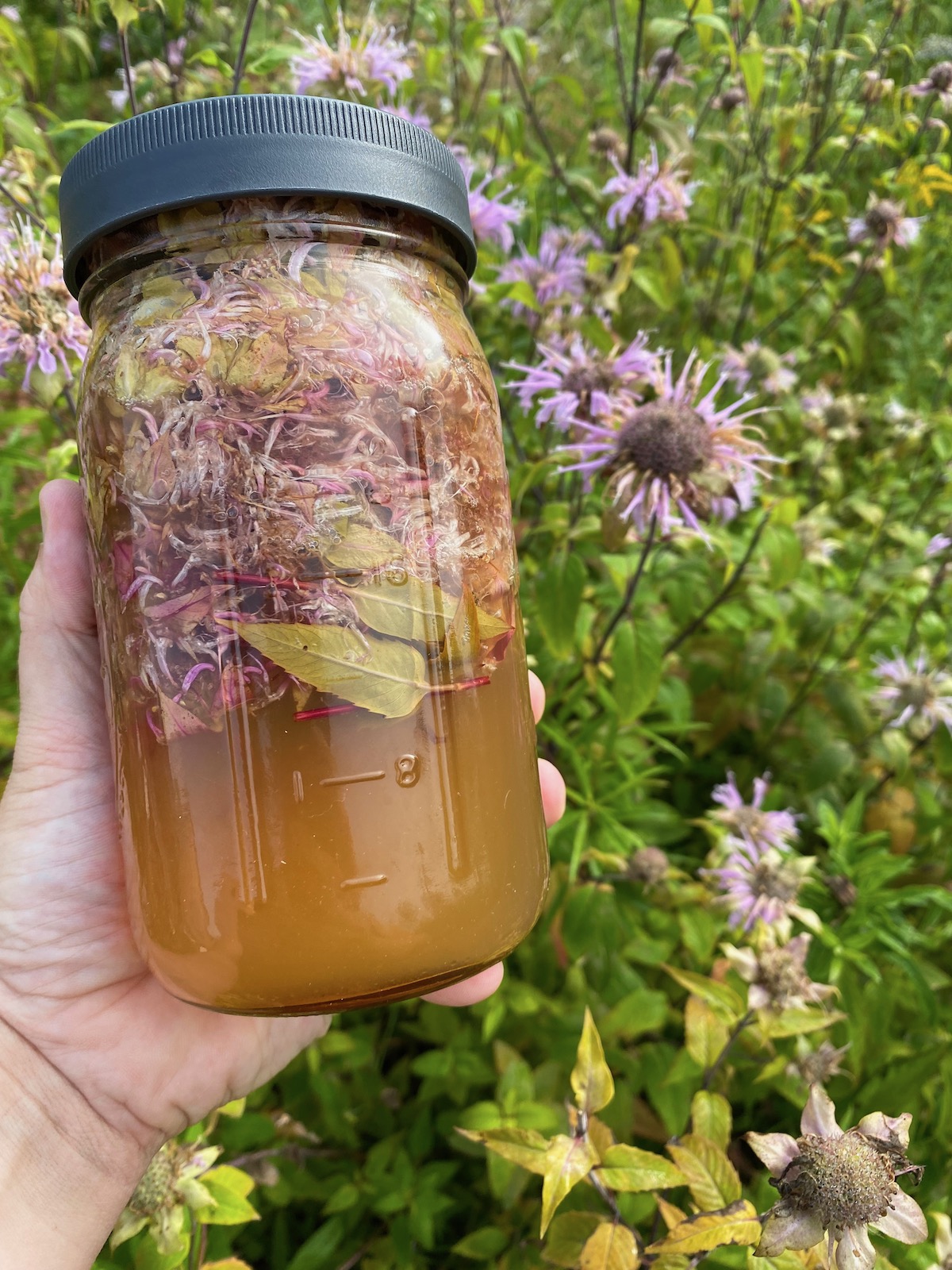
Next, we’re going to add the honey and the vinegar. The ratio of honey to vinegar is largely up to you—ancient recipes for making an oxymel were very sweet, with a heavy emphasis on the honey.
Some herbalists like to make their oxymels with a honey to vinegar ratio of 2:1, others prefer more vinegar than honey. I prefer making an oxymel with a 1:1 ratio and my family still finds this mixture plenty sweet without being cloying.
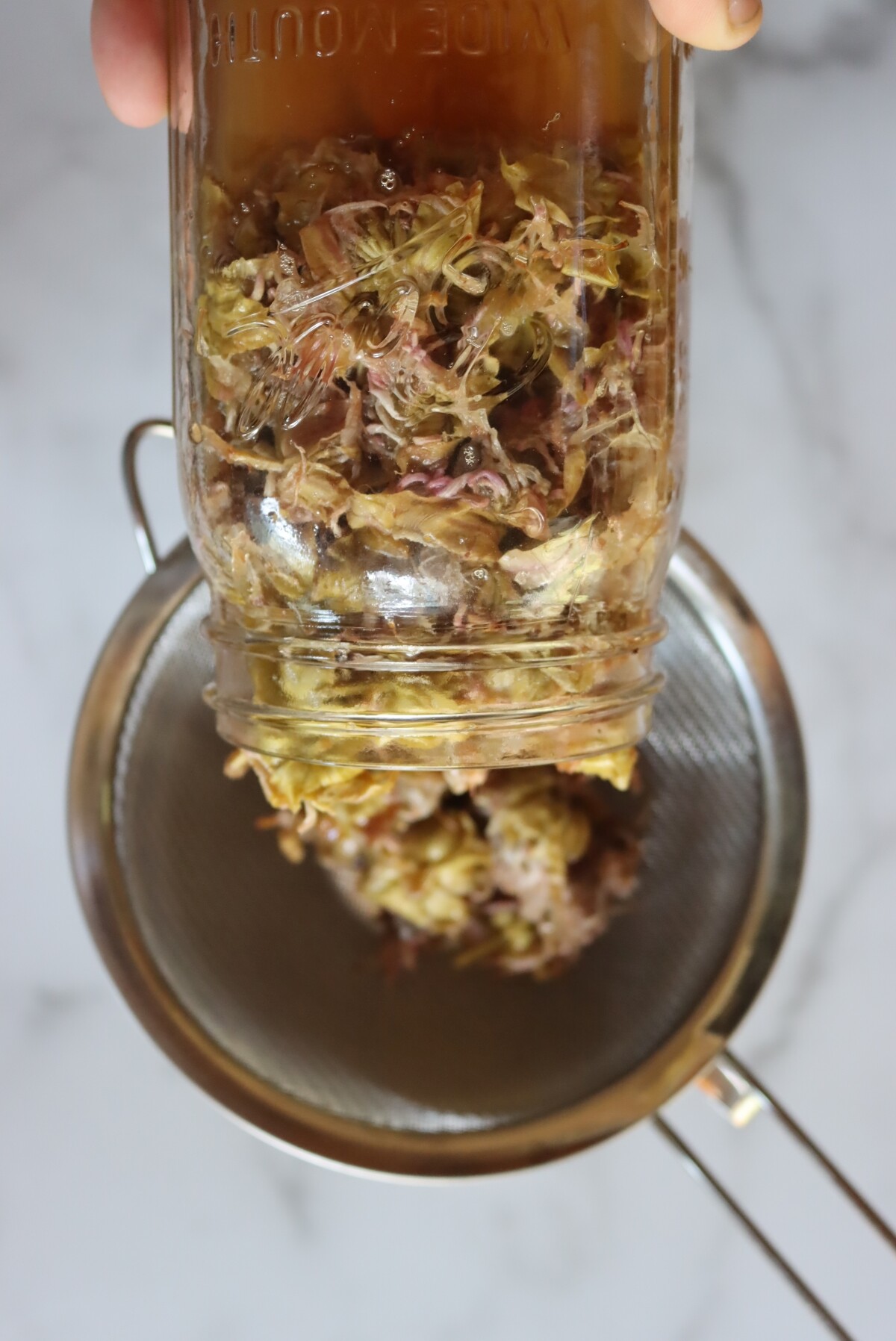
Whatever your preferred ratio, begin by adding the vinegar to the jar (halfway full for a 1:1 ratio) and then the honey. Screw on the lid tightly and shake the mixture until the ingredients are evenly distributed.
Place the jar in a dark, slightly cool location—a kitchen cabinet that’s not too close to your stove is a perfect spot and let it sit for 4 to 6 weeks. Whenever you remember, give the jar a good shake to redistribute the herbs.

When the oxymel is ready, pour the contents of the jar through a fine mesh strainer into another clean jar with a plastic lid. Label the contents of the jar and store your bee balm oxymel in a cool dark place.
This bee balm oxymel will be at its most potent for a period of 6 months. If you have a root cellar or pantry—basically any space with a consistent cool temperature that doesn’t get a lot of light—you can keep your oxymel for a longer period of time without the potency being affected.
How to Use Bee Balm Oxymel
There are no hard and fast rules about taking a bee balm oxymel, but generally speaking I recommend a tablespoon taken three times a day for a sore throat. These are the guidelines for an adult, children or the elderly might need a smaller amount.
Alternatively, try stirring a tablespoon of bee balm oxymel into a glass of sparkling water for a refreshing shrub-like beverage.
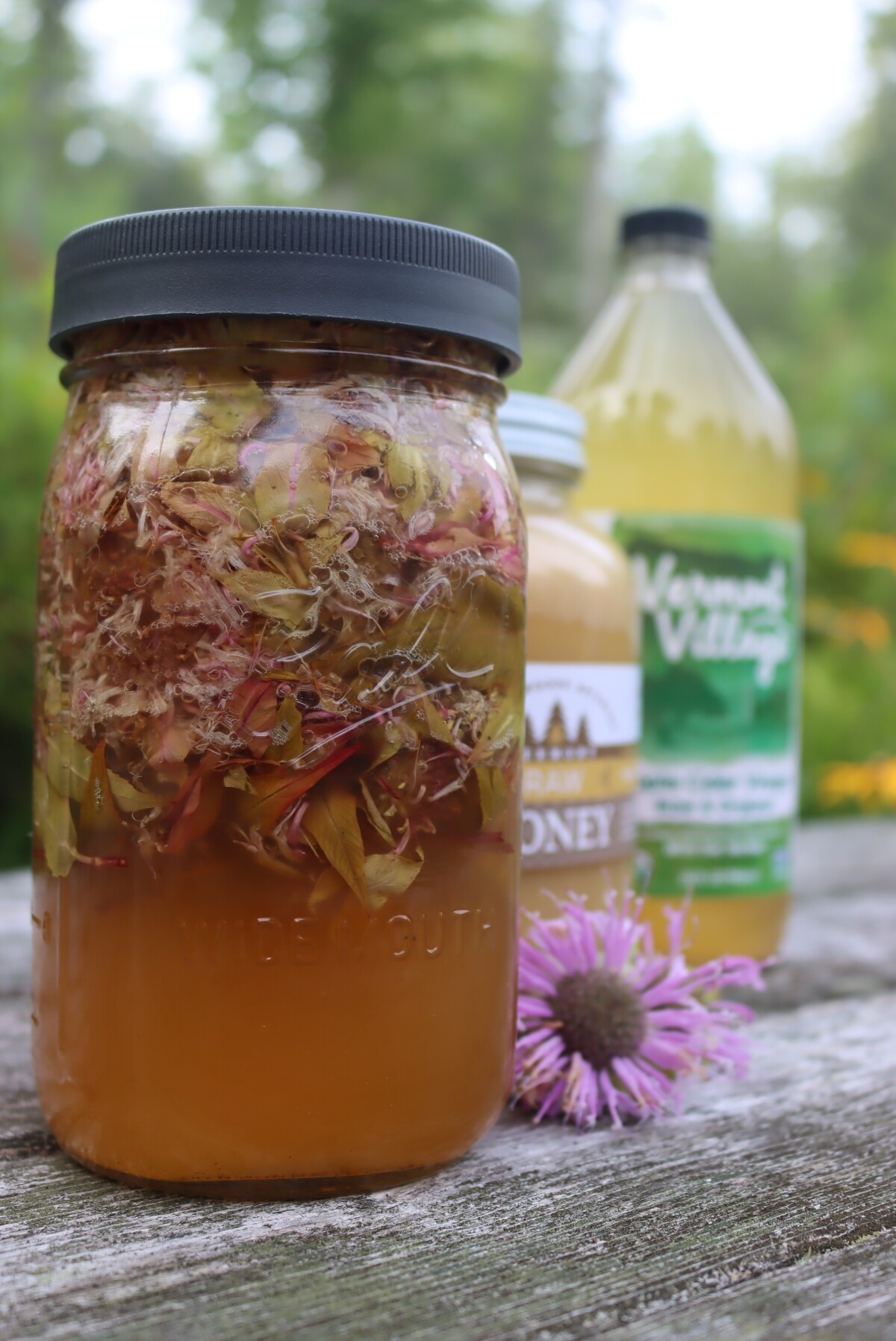
Ways to Use Bee Balm
Thanks to its medicinal traits and gentle herbaceous flavor, bee balm has a wide variety of applications and be be used to make everything from a healing poultice to muffins to mead.
For a complete list of ways to use bee balm, check out my in-depth guide to using bee balm in the medicine cabinet and in the kitchen.
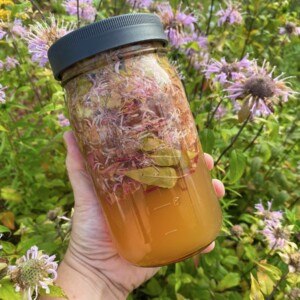
Bee Balm Oxymel
Ingredients
- Raw honey local if possible
- Apple cider vinegar with the mother intact
- Fresh or dried bee balm flowers and leaves
Instructions
- Add bee balm to mason jar. If using fresh bee balm, fill the jar 1/2 to 3/4s full. If using dried, fill the jar 1/4 full.
- For a 1:1 ratio of honey to vinegar, fill the jar halfway with honey and then apple cider vinegar.
- Screw on the lid tightly and shake the jar vigorously.
- Place the jar in a cool, dry place and let steep for 4 to 6 weeks. Give the jar a good shake when you remember.
- Strain the finished oxymel through a fine mesh sieve into another jar with a plastic lid. Label the contents of the jar.
- Store the finished oxmyel in a cool, dry place for up to 6 months for maximum potency.
Summer Herbal Remedies
Looking for more DIY herbal remedies to make this summer?
Herbal Guides
Just getting started as a herbalist? My in depth guides are a great place to start!
- 100+ Medicinal Plants (and How to Use Them)
- 20+ Immune Boosting Herbs
- 20+ Herbal Preparations for Herbal Medicine Making
- 18+ Herbal Remedies Anyone Can Make at Home
- 16+ Medicinal Trees for Your Herbal Medicine Chest
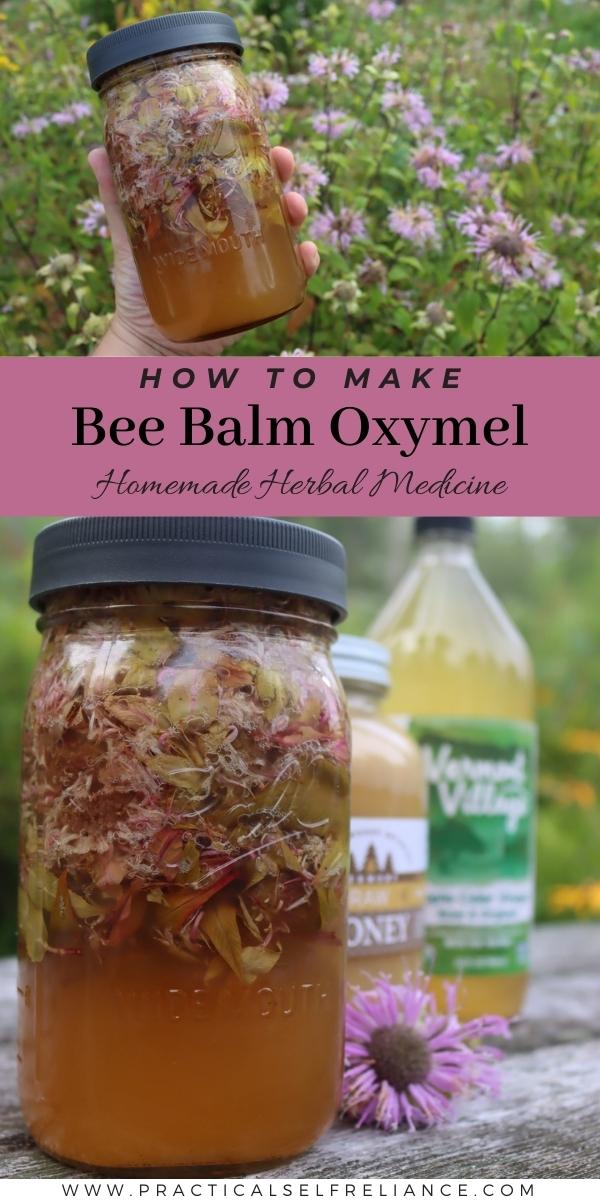


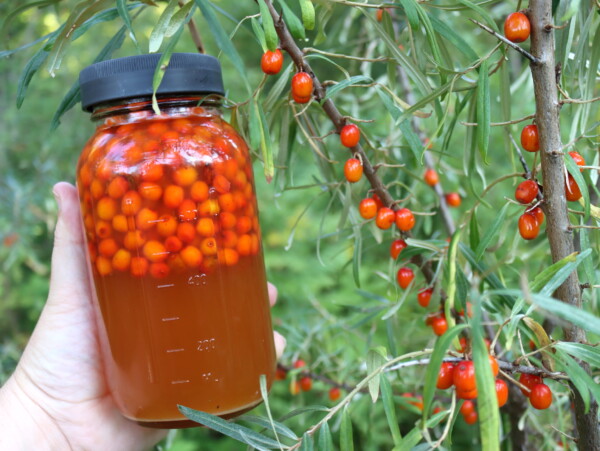
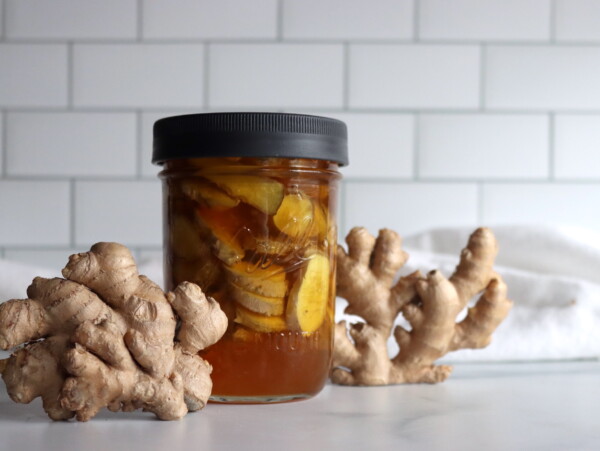
Hi! I’m vegan, is oxymel possible to make with maple syrup instead of honey? Thanks!
Yes, you should be able to use maple syrup in place of honey. I have also heard of people using lemon or lime juice with the syrup instead of the vinegar.
Nice post
Thank you. We’re so glad you enjoyed the post.
Just made a half gallon of Monarda Oxymel, and I’m thrilled with this preparation! We have fields of wild Monarda (Citriodora and Punctata) near our hives, which is GREAT as I was able to use the raw honey made from the same flowers, along with my home-made live ACV. Thank you giving me something new to do with these amazing flowers!
That’s wonderful, and the perfect way to combine that honey with the flowers it came from. That’s a really great idea!
The description says sit for 4 to 6 weeks but the recipe says 4 to 6 months. I’m guessing weeks is correct. Thanks for the information!
Good catch, thank you for that. It’s corrected now. Yes, weeks is correct. (Though it’d be fine after 4-6 months too, if you forget about it.)
Great article! I love how you explained the process of making bee balm oxymel in such a clear and concise way. It’s such a soothing remedy for coughs and sore throats. Have you tried making other types of herbal oxymels? If so, which ones are your favorites?
I have made several different kinds of oxymels. We have a post on herbal oxymels in general and also a post on elderberry oxymel. Our favorite oxymel is the oxymel that is needed for the need at hand.
One of my favorite oxymels is goldenrod, leaves and flowers. I use it to ease my seasonal allergies. Oxymels are great for those who are avoiding alcohol.
Hi, you need to fix up your recipe, as you have stated vinegar twice.
2. For a 1:1 ratio of honey to vinegar, fill the jar halfway with vinegar and then apple cider vinegar.
Thank you for catching that type-o! It’s fixed now.